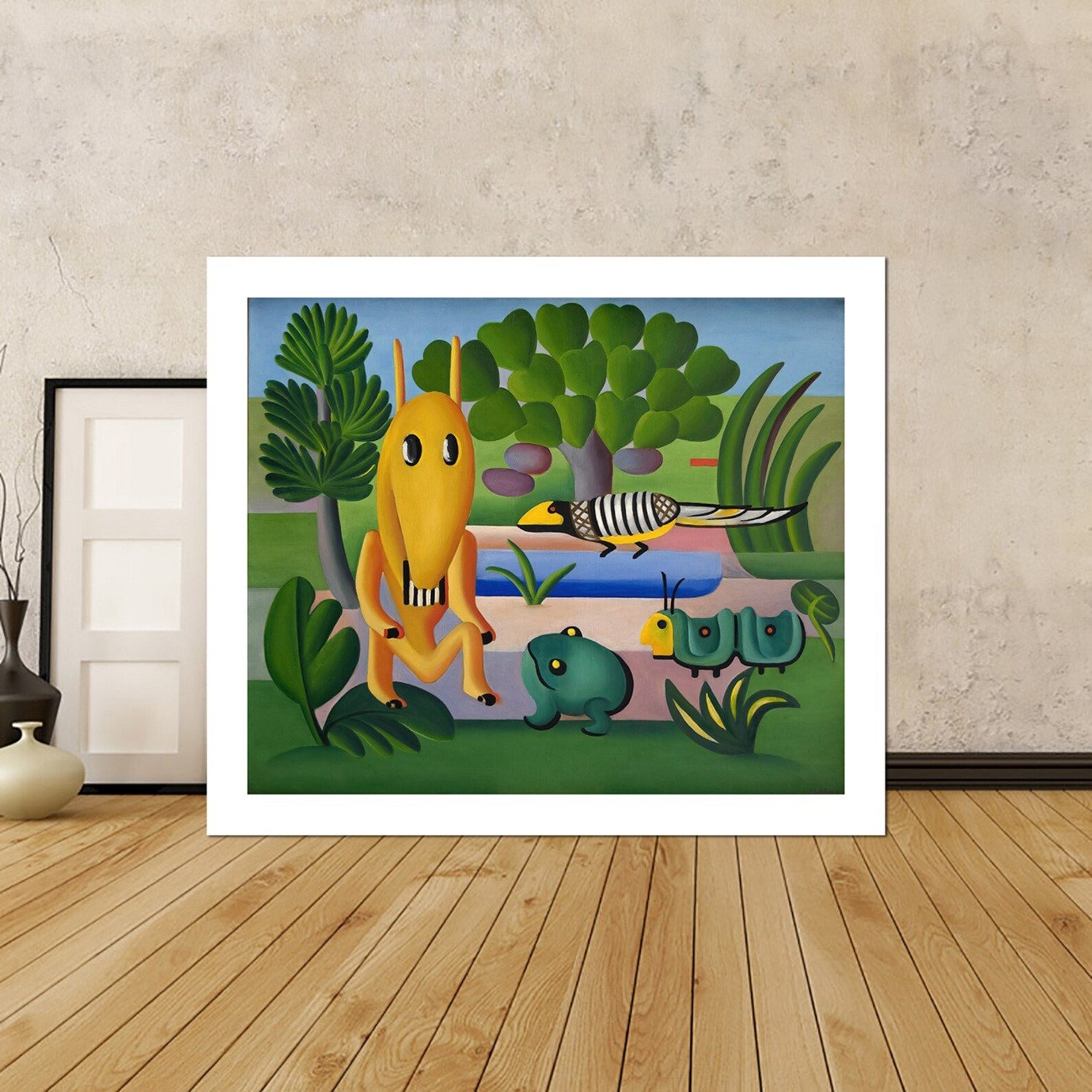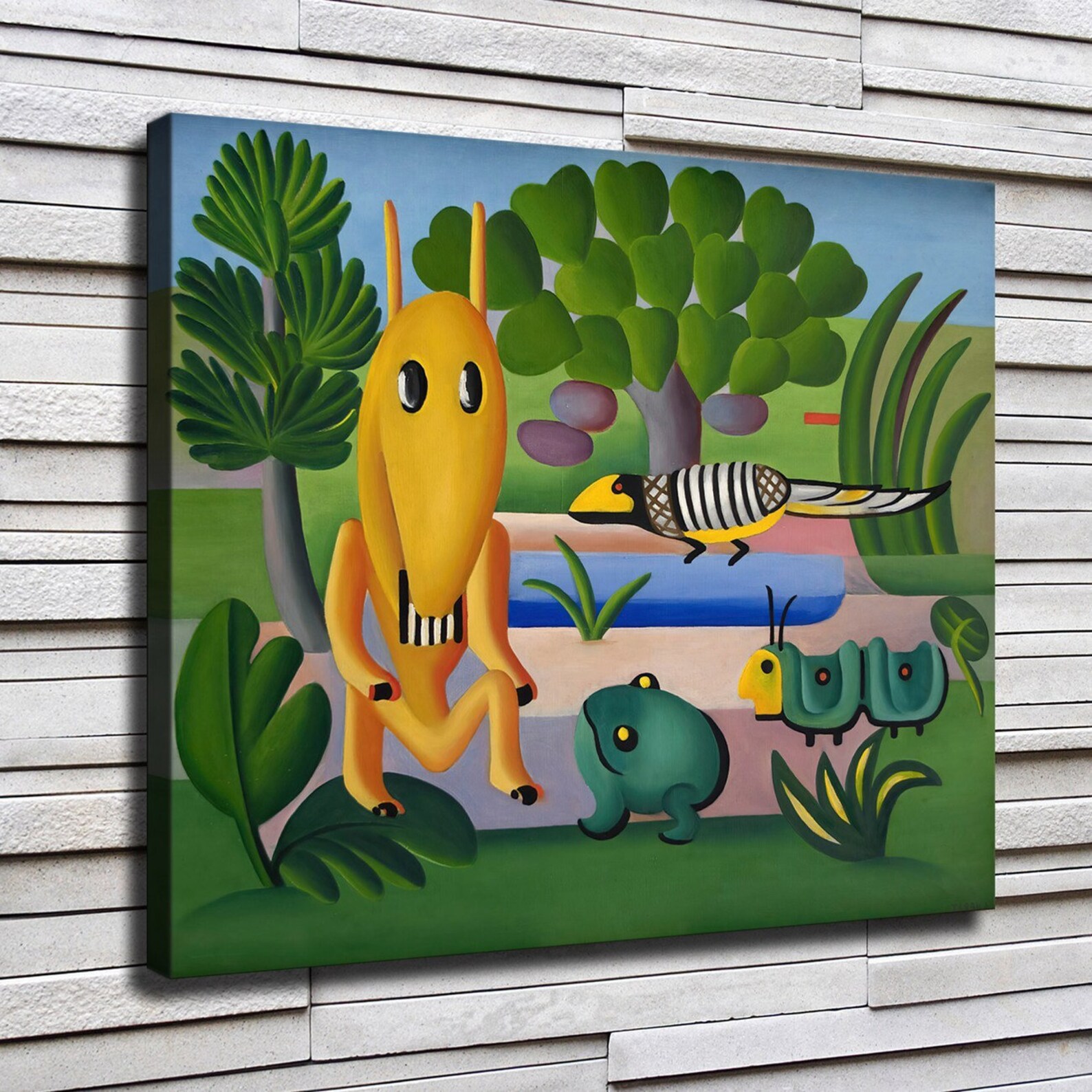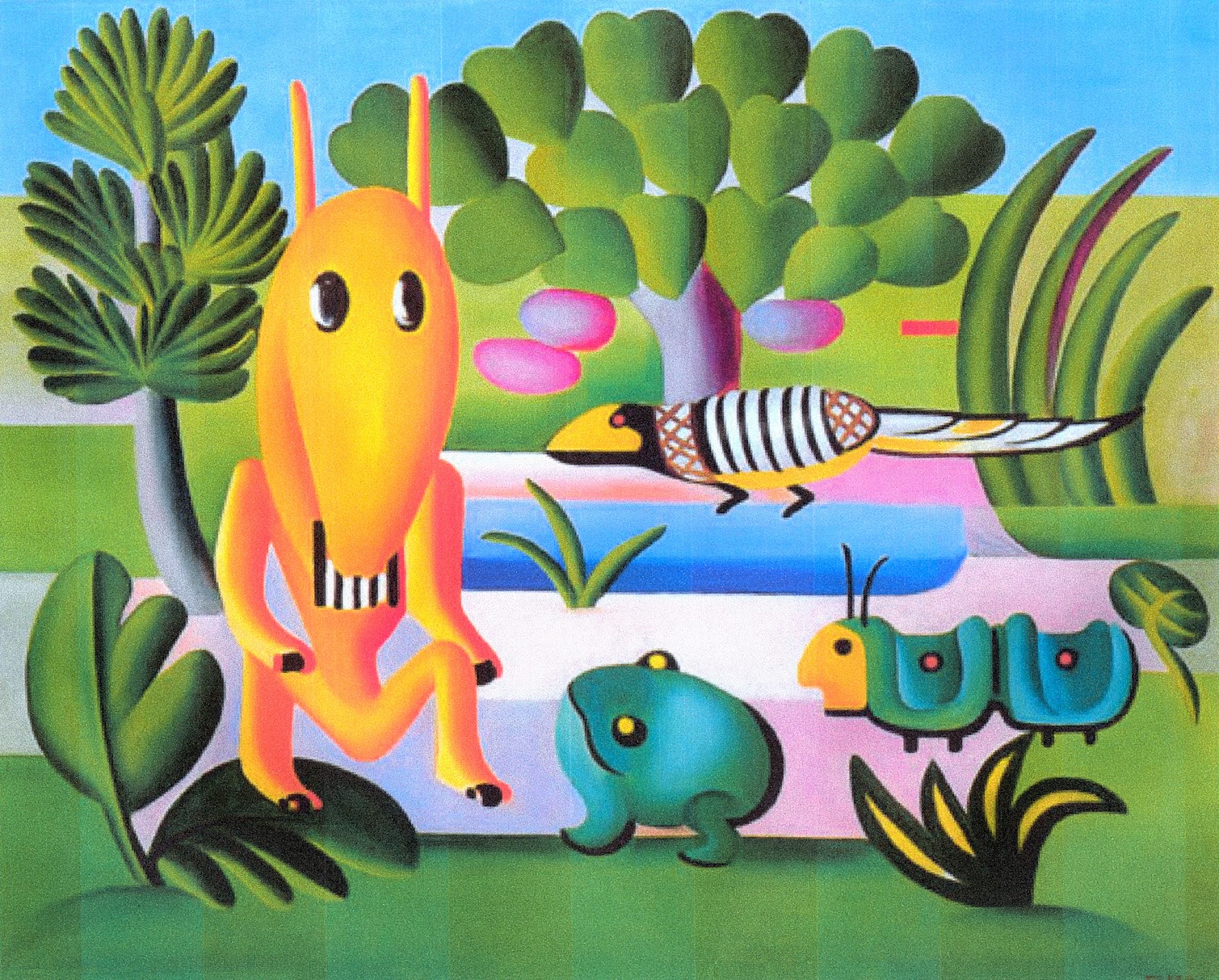
Classical Masterpiece 'A Cuca' by Tarsila do Amaral Framed Art Print by
Interview with curators Stephanie D'Alessandro and Luis Pérez-Oramas by David Ebony. The paintings of Brazilian artist Tarsila do Amaral (1886-1973)—simply known as Tarsila—and the theory of Anthropophagy, or the philosophy of "cultural cannibalism," introduced in 1928 by Tarsila's first husband, Brazilian poet Oswald de Andrade (1890-1954), were for me a major mystery and an.

Tarsila do Amaral A Cuca HD print on canvas ready Etsy
About Press Copyright Contact us Creators Advertise Developers Terms Privacy Policy & Safety How YouTube works Test new features NFL Sunday Ticket Press Copyright.

Tarsila do Amaral A Cuca HD print on canvas ready Etsy
Tarsila de Aguiar do Amaral (Portuguese pronunciation: [taʁˈsilɐ du ɐmaˈɾaw]; 1 September 1886 - 17 January 1973) was a Brazilian painter, draftswoman, and translator. She is considered one of the leading Latin American modernist artists, and is regarded as the painter who best achieved Brazilian aspirations for nationalistic expression in a modern style.

Tarsila do Amaral A Cuca (2009) Artsy
Translator Elisa Wouk Almino explores the narrative and historical context for Brazilian painter Tarsila do Amaral's work, which is being exhibited through June 3 at the Museum of Modern Art in New York City in a show entitled "Tarsila do Amaral: Inventing Modern Art in Brazil.". It seems the role of the translator is not so different from that of a curator.

A Cuca 1924 Tarsila do Amaral 18861973 Centre Pompidou Paris
About the work Tarsila do Amaral A Cuca, 2009 Offset Lithograph 25 3/4 × 38 1/4 in | 65.4 × 97.2 cm From an unknown edition Includes a Certificate of Authenticity Sold Create Alert ArtWise Los Angeles, Brooklyn Contact Gallery Want to sell a work by this artist? Sell with Artsy Artist Series Related artists Follow Follow Follow Follow

A Cuca Tarsila do Amaral Comprar em Casa Mascagni
Brazilian artist Tarsila do Amaral painted Abaporú in her São Paulo studio early in 1928. It depicts a seated nude figure in profile who is of ambiguous age, gender, and race. His bare right foot and hand are firmly planted on the ground. His right knee is bent towards his chest, obscuring any view of a left leg or foot.

Tarsila do Amaral A Cuca HD print on canvas ready Etsy
A Cuca, which means "critter," is a complete stylization of the natural exuberant landscape. In a letter to her daughter in 1924, Tarsila mentioned this painting. Artist, Tarsila do Amaral (voiced by curator Karen Grimson): I am doing some very Brazilian paintings that have been greatly appreciated. I just finished one called *A Cuca.

Tarsila do Amaral biografia e obras Toda Matéria
'A Cuca' was created in 1924 by Tarsila do Amaral in Naïve Art (Primitivism) style. Find more prominent pieces of animal painting at Wikiart.org - best visual art database.

Obras de Tarsila do Amaral
A Cuca 60.5 cm 72.5 cm A Cuca is an Early Modernist Oil on Canvas Painting created by Tarsila do Amaral in 1924. It lives at the Centre national des arts plastiques in Paris. The image is © Tarsila do Amaral Licenciamentos, and used according to Educational Fair Use, and tagged Frogs, Birds, Mythological Animals and Framed Artwork.

A Cuca Tarsila do Amaral... Biografia da Arte
A Negra was first exhibited in Paris in 1926. MoMA's catalogue notes that the Brazilian writer José Severiano de Rezende "praised Tarsila's portrayal… as a sign of the artist's true and.

A Cuca by Tarsila do Amaral Obelisk Art History
A CUCA TARSILA DO AMARAL A CUCA TARSILA DO AMARAL, é uma importante pintura modernistas do Brasil. Obra foi criada em 1924, a pintura retrata a personagem folclórica Cuca em uma interpretação única e memorável. Aqui, vamos explorar a história por trás da obra, seu significado cultural e artístico, e seu impacto na arte brasileira. Inicio

A Cuca Tarsila do Amaral Óleo sobre tela 50x40cm 200… Flickr
Tarsila do Amaral, A Negra (The Negress), 1923, oil on canvas 100 x 80 cm, MAC/USP Collection, São Paulo. The first phase of Tarsila's work, known as Pau-Brasil (Brazilian Wood), is a far cry from the conservatism advocated by the Beaux Arts she learned as a student before moving to Paris in 1920. It begins in 1923 with the iconic tableau.

Tarsila do Amaral, A Cuca, 1924 11/12/17 artinstitutechi … Flickr
Segundo a lenda, a Cuca é uma velha feia que tem forma de jacaré e que rouba as crianças desobedientes, sendo usado por muitas vezes como uma forma de fazer medo em crianças que não querem dormir. Tarsila usou cores alegres e que lembram o Brasil, usando imagens estilizadas e as cores com vários matizes, deixando uma imagem que lembra a infância.
Aventuras na Escola O que pensamos sobre o mundo de Tarsila
A Cuca: a obra de Tarsila do Amaral que homenageia o folclore Artigo Dia 22 de agosto, comemoramos no Brasil o Dia do Folclore. Apesar de muitas vezes lembrarmos das mitologias grega e nórdica, temos um acervo riquíssimo de personagens e histórias daqui.

Tarsila do Amaral A Cuca HD print on canvas ready Etsy
A partir da paisagem da obra criar outros personagens folclóricos na imagem.Link com o material disponível:👉https://www.facebook.com/260597194386666/posts/1.

A Cuca By Tarsila Do Amaral Print, Canvas Art, Framed Print. Truly Art
Exhibition. Feb 11-Jun 3, 2018. "I want to be the painter of my country," wrote Tarsila do Amaral (1886-1973) in 1923. Born at the end of the 19th century to a family of coffee plantation owners in São Paulo, Tarsila―as she is affectionately known in Brazil―studied piano, sculpture, and drawing before leaving for Paris in 1920 to attend the Académie Julian, the famous art school.